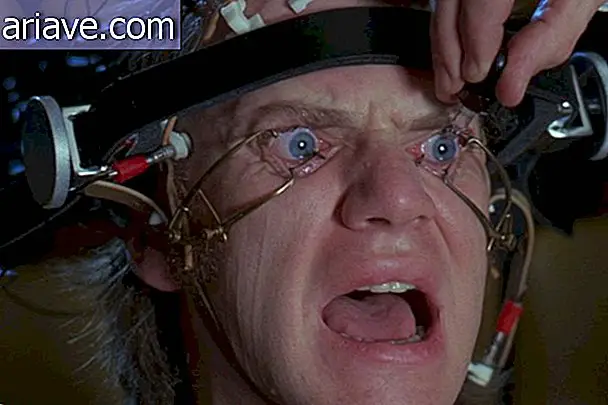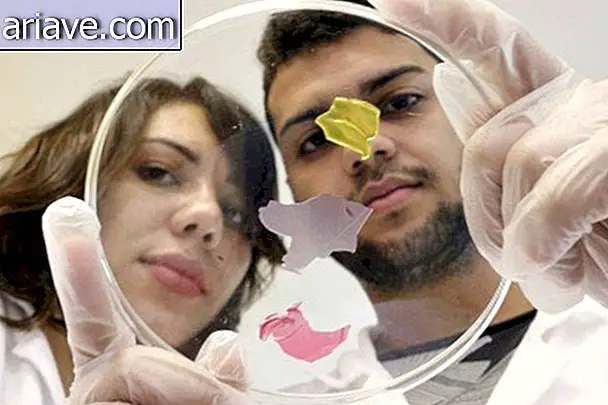The dark story behind the chemical terrorist attack in Japan
A Date Japan Will Never Forget: March 20, 1995 was marked as the worst bioterrorism attack in modern history. Know all the events that led to the fateful day:
How it all began
In 1938, researchers from the IG Farben group in Nazi Germany developed the "chemical compound 146" that was capable of destroying the central nervous system, causing uncontrollable muscle spasms and death. After a while, Chemistry 146 got a new name: sarin.

Over the following decades, such a chemical weapon became notorious, being used in the Iran-Iraq War, when Saddam sent rockets full of compound to his enemies, killing about 5, 000 people. That was a great war crime, but worse than that: it became an inspiration.
In Japan, members of the Aum Shinrikyo cult were researching weapons of mass destruction and as soon as they learned about sarin they recruited scientists to recreate it. By the early 1990s, his new “doomsday” weapon was ready.
The cult "Aum"
Although the Aum Shinrikyo cult had become a “doomsday” group, that was not their goal at the beginning. Shoko Asahara, its founder, mixed the precepts of Christianity, Buddhism and yoga with New Age teachings.

However, most of the madness was centered around Asahara himself, who called himself the reincarnation of the Hindu god Shiva. His followers were so devout that they drank vials of their blood and the dirty water of their baths in search of light.
Despite the eccentricities, the group was great at recruiting the upper classes of society. In his deluded mind Asahara believed that his wealthy followers would be able to control Japanese society.

One of his first plans involved politics: in 1990 he organized a scheme for 24 members of his cult to run in elections. He believed in victory, but his party received less than 1, 700 votes.
The defeat caused them to turn to the apocalypse. The day sarin was ready, they made a song to celebrate:
“He came from Nazi Germany,
A dangerous chemical weapon,
Sarin, sarin.
If you inhale the mysterious vapor,
You will fall with bloody vomit from your mouth,
Sarin, Sarin, Sarin,
The chemical weapon ”
The first bombing

On June 27, 1994, Aum members parked a van on a residential street in Matsumoto and sprayed the neighborhood with poison gas. The operation was just a test for the attack in Tokyo: Asahara wanted to see how many people they could kill. After 30 minutes, the entire neighborhood was suffering terrible convulsions.
Seeing his wife lying on the floor, Yoshiyuki Kono, a machine salesman living in the suburb of Matsumoto, called the emergency. When the doctors arrived, they found about 50 seriously ill people on the streets. Inside the house, more victims were dying or already dead.

In all, seven people died that night and more than 200 were injured. Aum considered that the next target should be an unventilated place where no one could run from the cloud of poison.
Yoshiyuki Kono became the prime suspect for being the first to alert police. He was arrested, and the media defamed his name. Thanks to the cult's actions, Kono not only lost his wife, but his reputation, his livelihood, and almost all his sanity.
The day of the attacks
Kenichi Hirose boarded the Marunouchi line of the Tokyo subway. In his hands, Hirose carried an umbrella and a plastic bag containing two small packages. It was rush hour and the trains were packed with workers heading for the city center. Not being noticed by the people around him, Hirose calmly waited.

At the same time, four other men were boarding different stations, all with the same umbrella and plastic bags. Before eight o'clock five men dropped their packages to the ground and pierced them with the tips of their umbrellas.
They then got up and got off the trains, disappearing into the crowd. No one noticed the dust beginning to come out of the perforated bags.
Ironically, the first indication that something was wrong came from one of the attackers: Kenichi Hirose. He got into the runaway car and started shaking uncontrollably. Her breath caught in her throat, and despite all Aum's precautions, Hirose became the first fatal victim of sarin that day.

Within minutes, the train passengers began to cough and vomit. As soon as one of the vehicles stopped at Kodenmacho Station, a passenger kicked the sarin-filled bag off the platform where many other people were.
Three officials were assigned to remove suspicious bags from the vehicles. Without protection, they only used newspaper to wrap the packages. Before long, two of them agonized to the ground to death.
Was it the end of the world?
It was 8:30 am when the transport network was stopped. The effects of the attack were increasingly visible. Some vomited uncontrollably, others fell into a coma from which they would never wake.
Many of those affected were permanently blinded. In one horrible case, a woman's contact lenses were fused to her eyeballs, forcing doctors to remove both eyes surgically.

Outside the seasons, the bodies of the wounded began to accumulate. Downtown Tokyo resembled a war zone. The hospitals overflowed. It felt like the end of the world.
As chaos ensued, Hiroshi Morita was preparing to publish his report on the previous attack. He was the doctor who had treated the first victims and was considered Japan's leading authority on sarin poisoning. Luckily, Morita had the television on, and as soon as the tragedy was reported he immediately realized what was happening and what had to be done.
Despite being one of the major cities in the world, Tokyo was totally unprepared for such an attack. Morita quickly called all the hospitals and explained how they should act. It was a turning point on Japan's day of terror and possibly reducing the death toll.

The result of the attacks
By early afternoon, Tokyo was finally under control. It was clear that Aum had failed in its stated goal of bringing about the "end of the world." Although the attack had caused chaos, the city was already recovering.
Meanwhile, Aum himself was in disarray: some of the members involved in the attack had accidentally poisoned themselves by releasing the chemical, and police had already received anonymous allegations about the group.
At the end of the day, with 12 dead and 6, 000 injured in the city's hospitals, the bombing left a mark on the population. Only 9/11 resulted in so many internments of a single terrorist attack.

Even today, many people suffer from the effects of sarin. Sanae Yamada was hospitalized on the day of the attacks. Years later, the smell of an ink solvent triggered a deadly sensitivity to her chemicals.
For others, the lasting effects range from blindness to weakness to death. A study, conducted in 2000, found that up to 30% of those who were infected were still suffering from mental problems.
A new attack
Just two days after the attack, police were able to close a sarin factory and reach Aum manager Asahara. He denied involvement in the subway attacks.
However, even with police progress, Aum was determined to complete its goal. With 40, 000 members and access to deadly weapons, it was only a matter of time before they planned a new attack.
A bomb filled with cyanide gas was left in a toilet at Tokyo's Shinjuku Station. She had enough poison to consider the previous attacks just a "warning".

Fortunately, an error with the detonation mechanism caused the bomb to ignite rather than explode. Experts estimate that if it worked, the material would be enough to kill at least 10, 000 people.
Bombs were sent to the Japanese authorities, resulting in more serious injuries. Other attacks were planned, but it was too late: Ashara and 12 others were sentenced to death. With the leader arrested, the group changed its name to "Aleph" and had only 1, 500 members.
Its consequences
Despite the number of people injured, Aum's attack can fortunately be considered a failure. Less than a month later, a man killed nearly 13 times more people with a truck bomb in Oklahoma. Five years later, the 9/11 attack changed the way we think of terrorism.
However, modern Japan still bears the scars of attacks on the Tokyo subway. According to writer Haruki Murakami, March 20, 1995 marked the moment when Japan's psyche changed forever.












